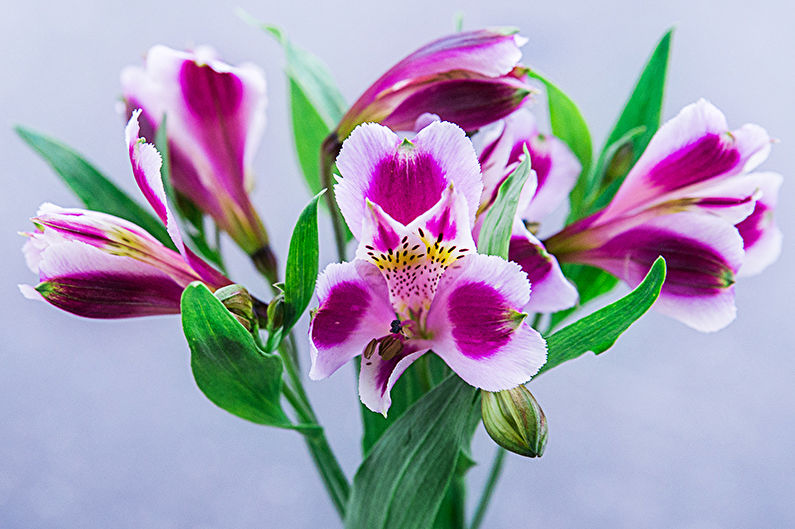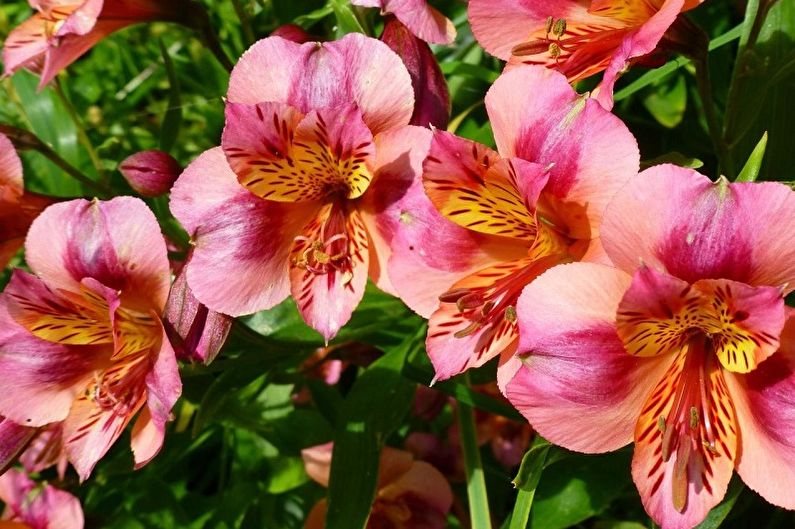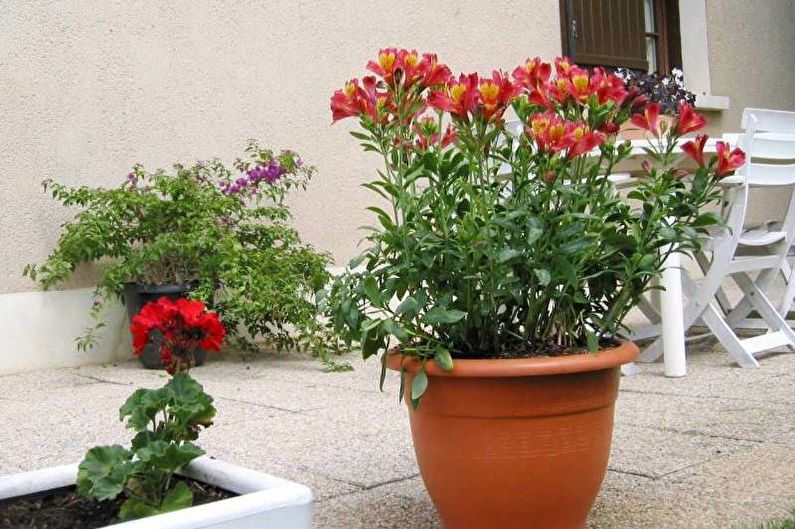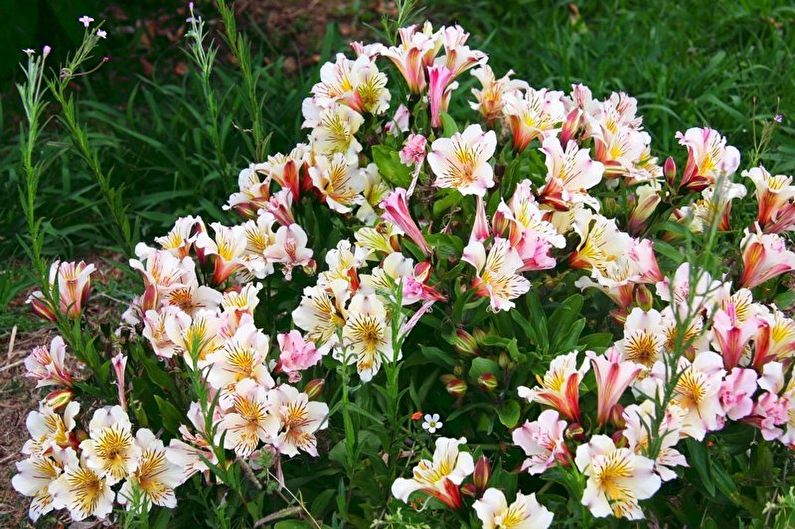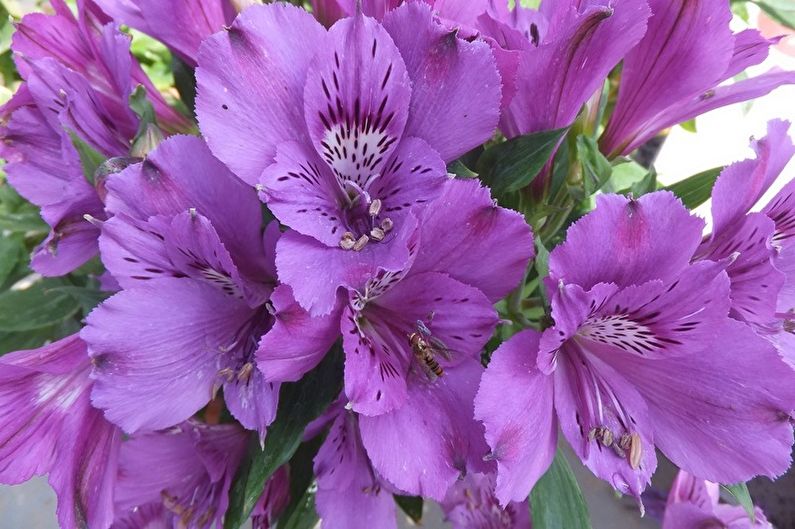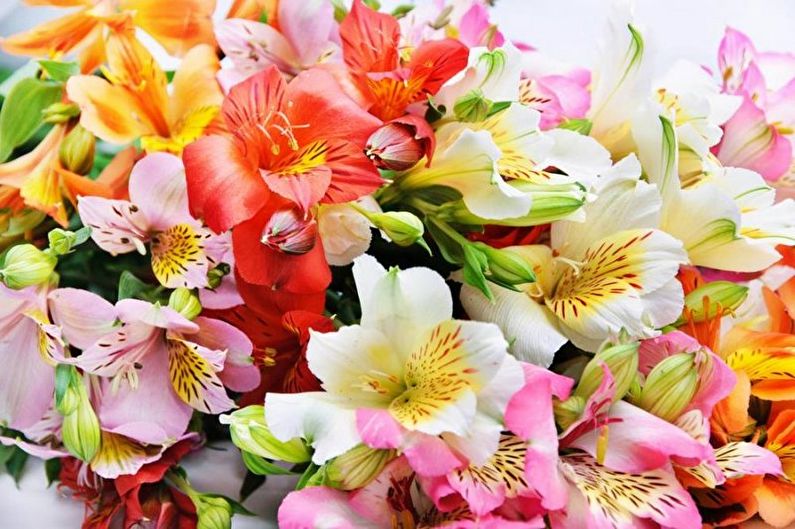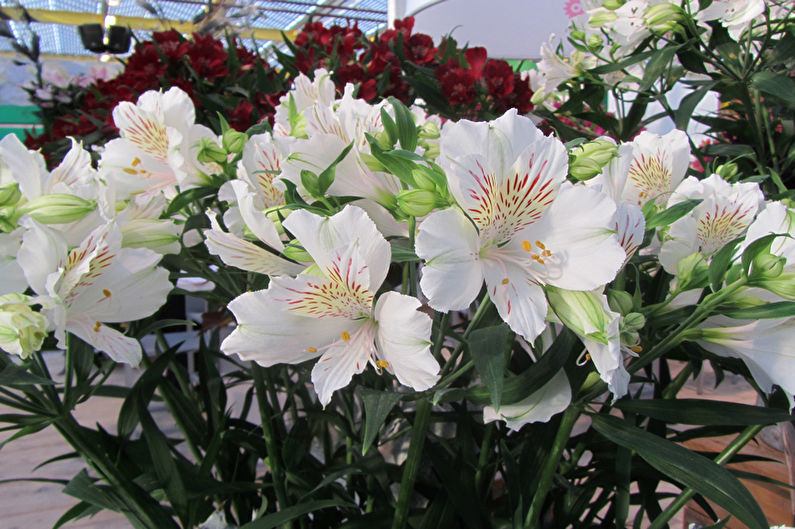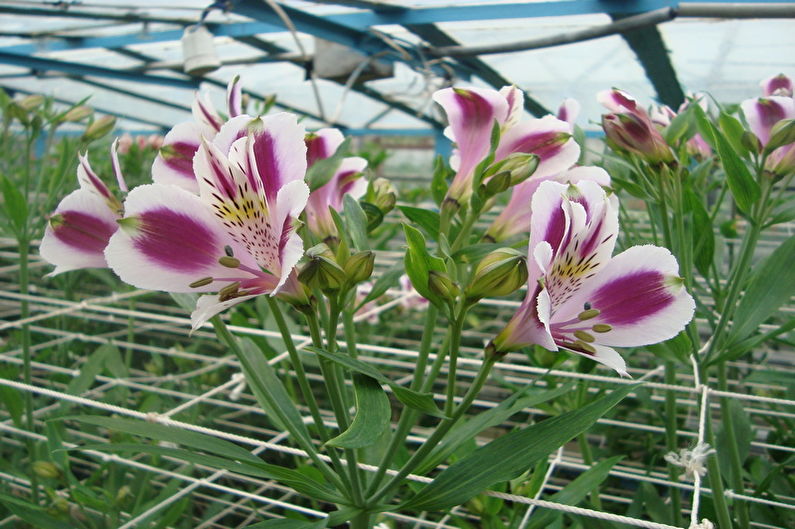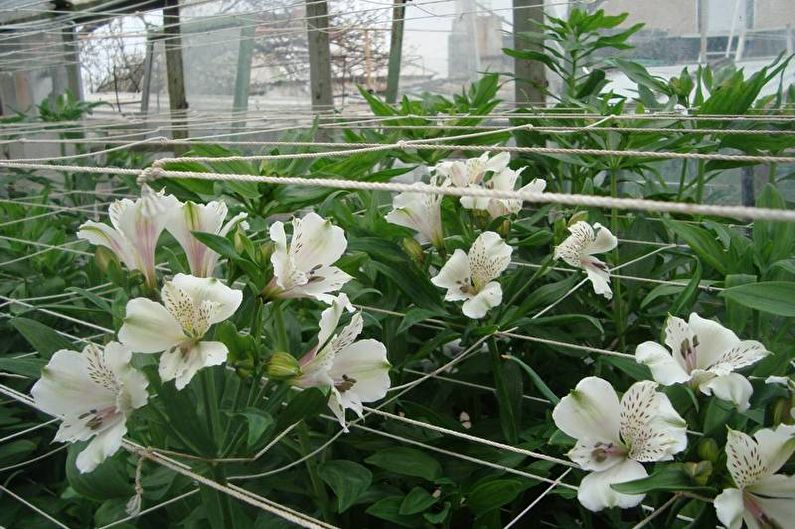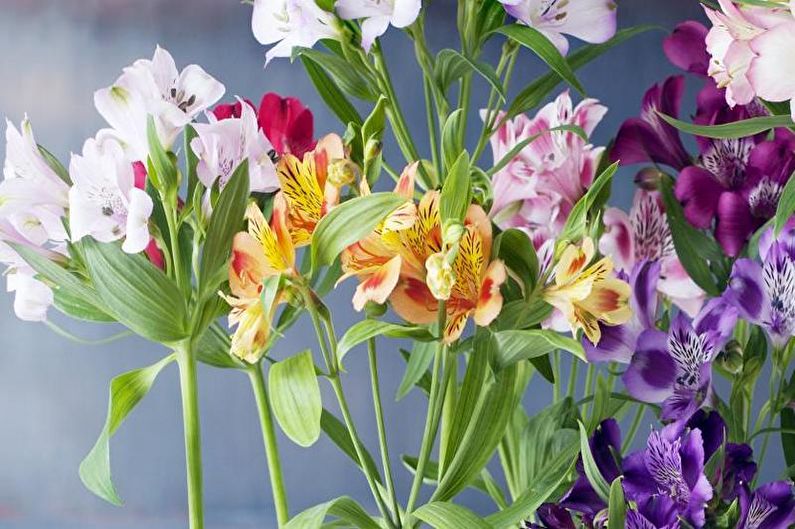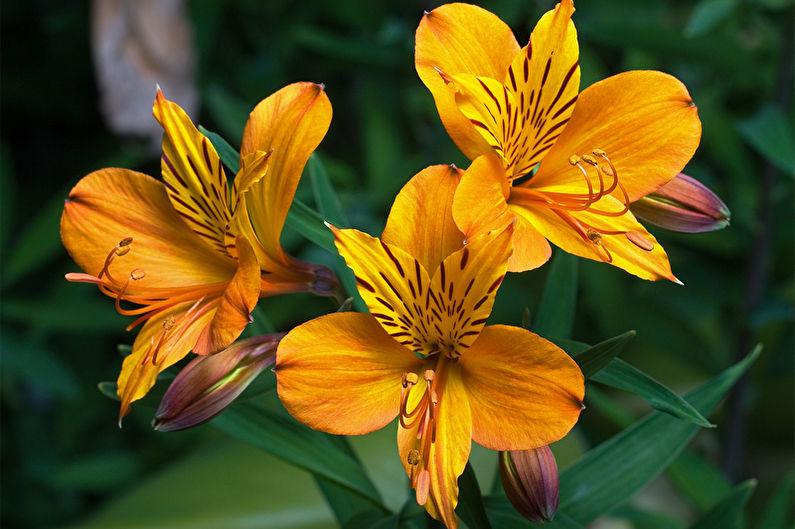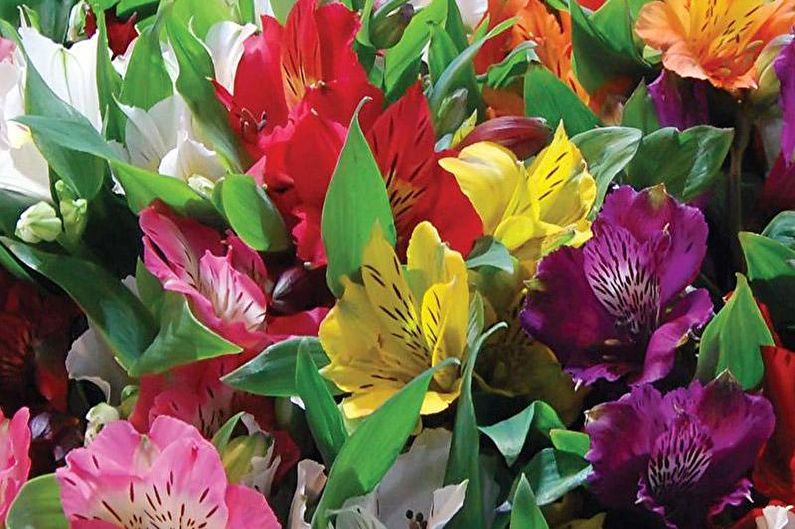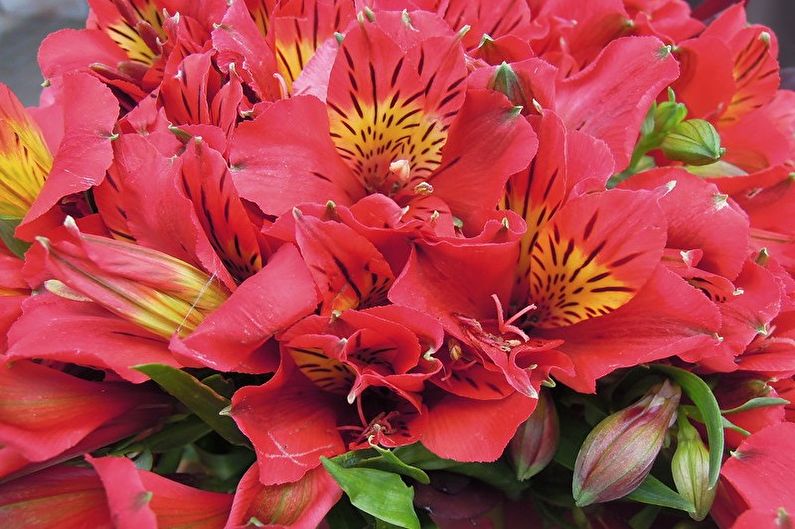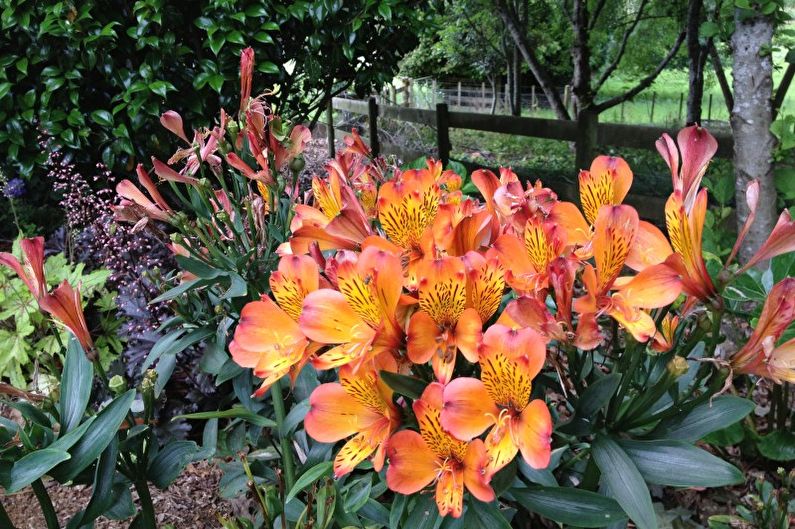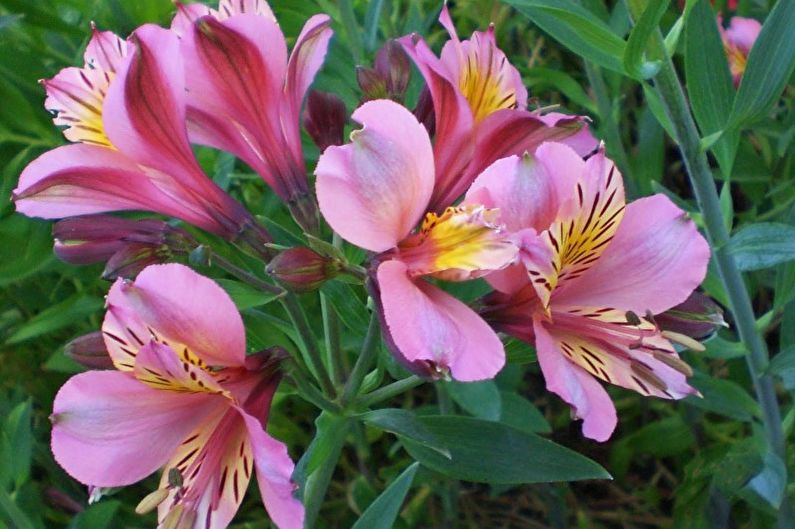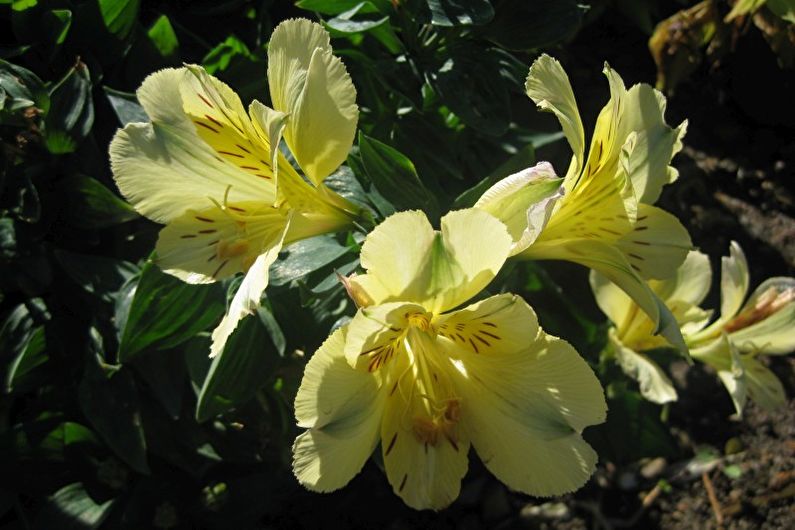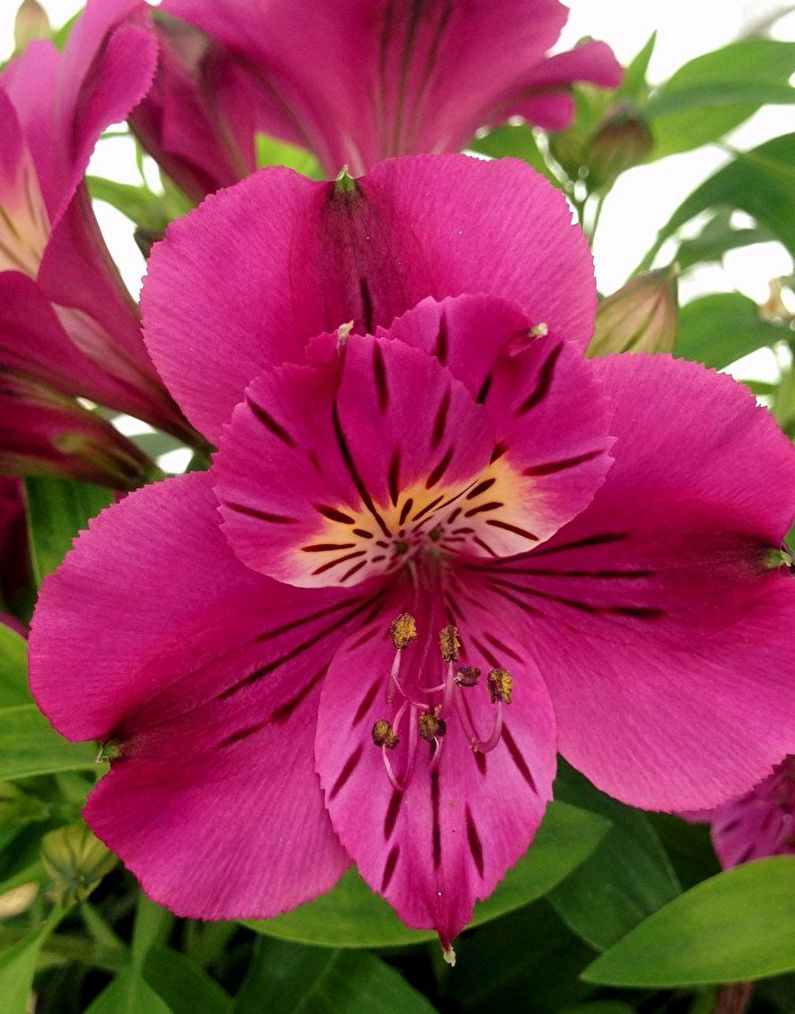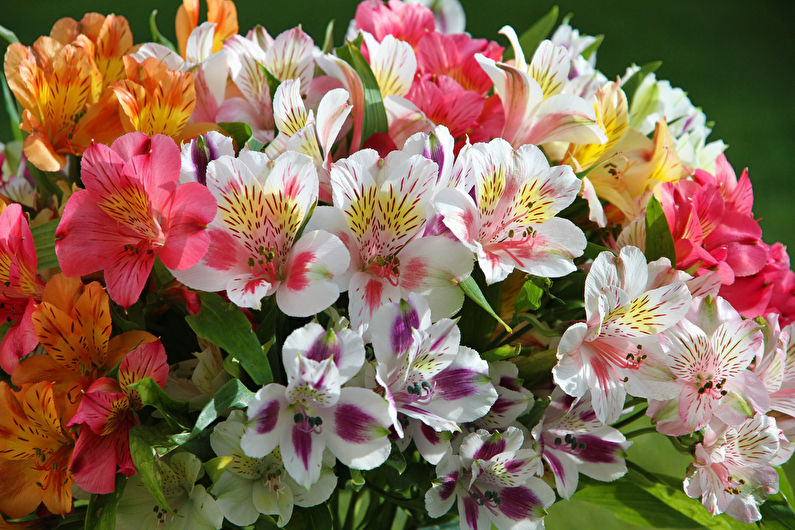
An excellent flower with a beautiful and slightly cosmic name Alstroemeria combines an Eastern exotic unique grace of orchids and proud to become lilies. It will become a real decoration for balconies, loggias, flower beds, and will also make an excellent bouquet, as it is able to maintain its color in cut form for up to two weeks. Consider what this natural perennial from the South American continent can be, with bright delicate flowers, as well as the rules for care and reproduction.
Types of Alstroemeria
The diversity of culture in wildlife is represented by more than 75 wild species, whose height rarely reaches 1 m, which can not be said about cultivated varieties. Varietal and hybrid alstromerias often reach 2 m, have medium-sized flowers (maximum 5 cm in diameter) of various colors. Such species are tall and place them, as a rule, in the background of flower beds.
There are also undersized representatives decorating mixed plantings with beautifully flowering summers, window sills of apartments, loggias. They are also used to create borders. Among the variety, the most popular types among flower growers can be distinguished:
Alicia - A hybrid plant with white and pink flowers similar to chrysanthemums. Flowering is observed throughout the summer;
"Brazilian Lily" - One of the highest crops, branches of which reach two meters in height. Originally from Brazil, from where it got its name. Her reddish-bronze flowers are collected in lush inflorescences containing up to 30 pieces;
Beauty - blooms with lilac, bluish-purple flowers in spring and autumn. The bush has powerful straight stems 1.5 m high;
Virginia - a plant with large white flowers with waviness along the edges of the petals. The flowering period is quite long - from the beginning of summer to late autumn;
Golden - grows up to a meter in height, blooms with dark orange. Often this variety can be found in flower shops as a component that complements floral arrangements;
Canaria - its thick stems with dense foliage reach a height of 1.5 meters. Flowers are presented in a yellow palette with small splashes. Flowering can be observed all spring, as well as in the first half of autumn;
White Wings - It is popular with many florists due to the snow-white palette of beautifully shaped flowers. The height of the bush reaches 2 m. It blooms almost all summer, with the exception of short breaks in July and August.
Only a small part of all the variety with which you can fill the infield is presented here. The advantage of the culture is the absence of smell, due to which it can be used to create compositions with any colors.
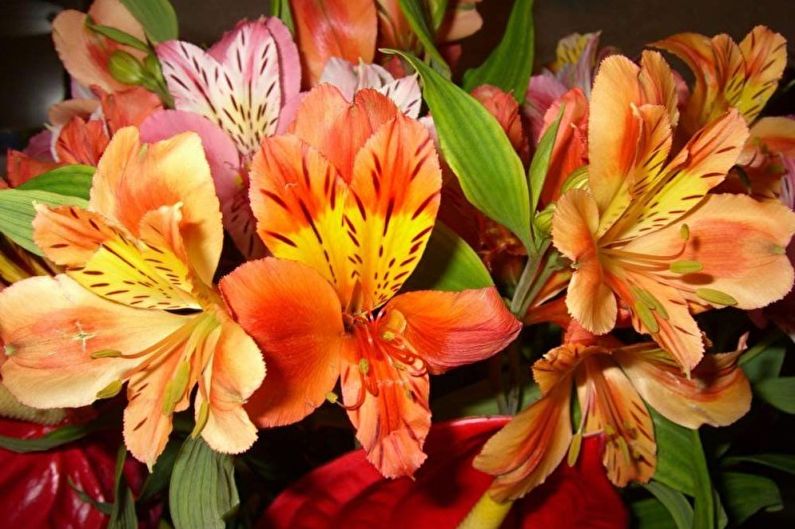
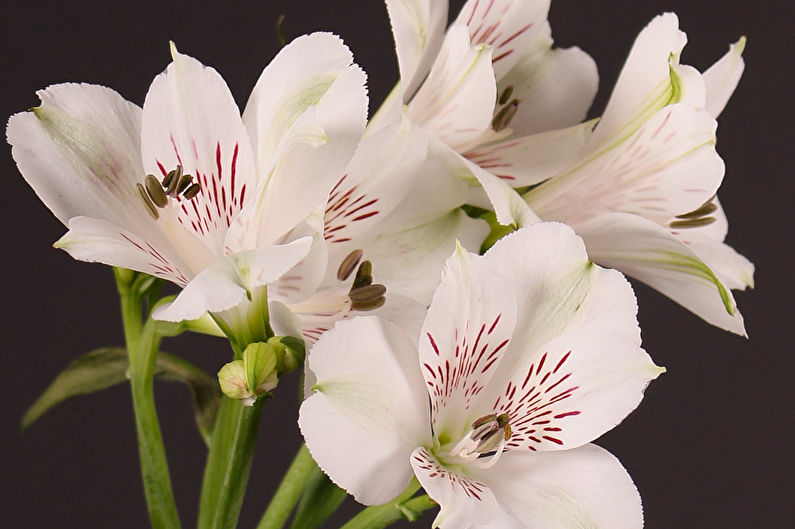
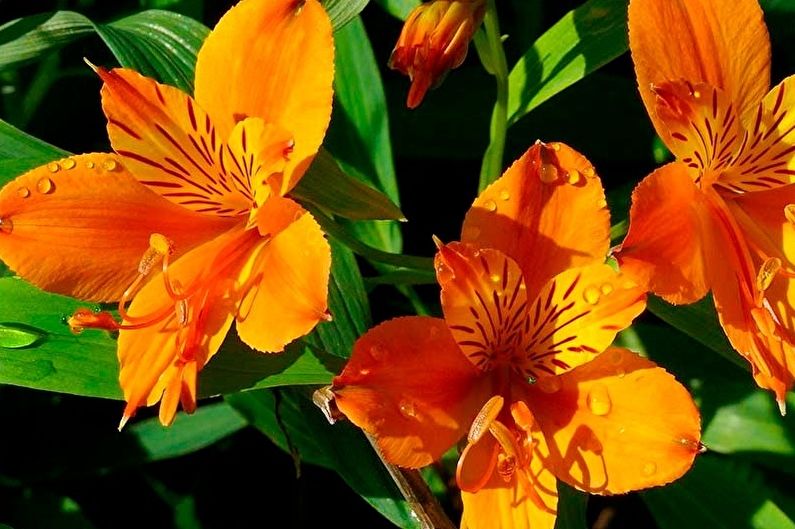
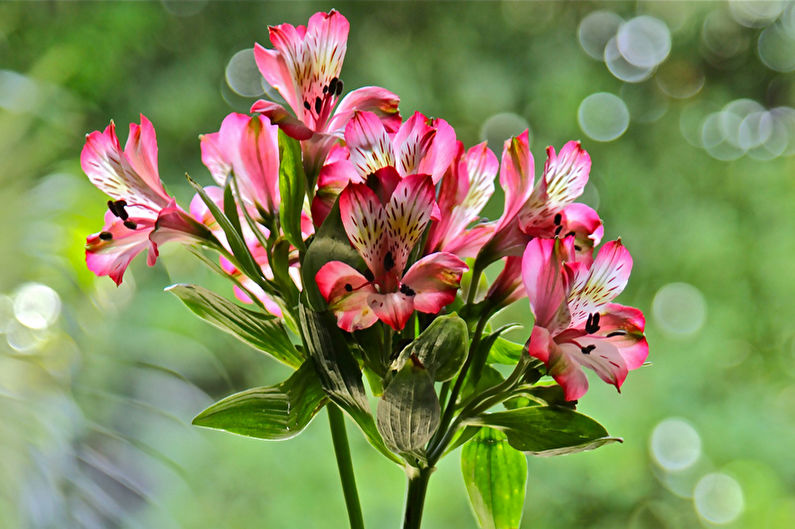
Proper Alstroemeria Care
Before planting the first bush of this wonderful culture, you need to familiarize yourself with important information on how to properly care for it. Only by creating the necessary conditions for the plant, you can protect it from various diseases and enjoy the beautiful flowering.
Lighting
The culture will feel comfortable in well-lit areas. On particularly hot days, it is necessary to create partial shade for garden residents, and apartment apartments can simply be moved to a darker place. In the autumn-winter period, alstroemeria is kept on the south window, and in the spring and summer, direct sunlight should alternate with bright diffused light at noon. The desired duration of daylight should be 14 hours - this will ensure successful flowering. The plant can be illuminated with fluorescent lamps.
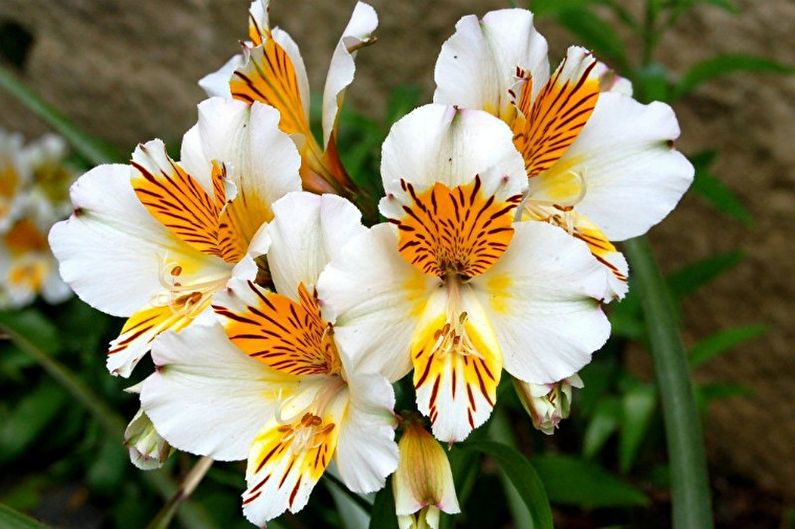
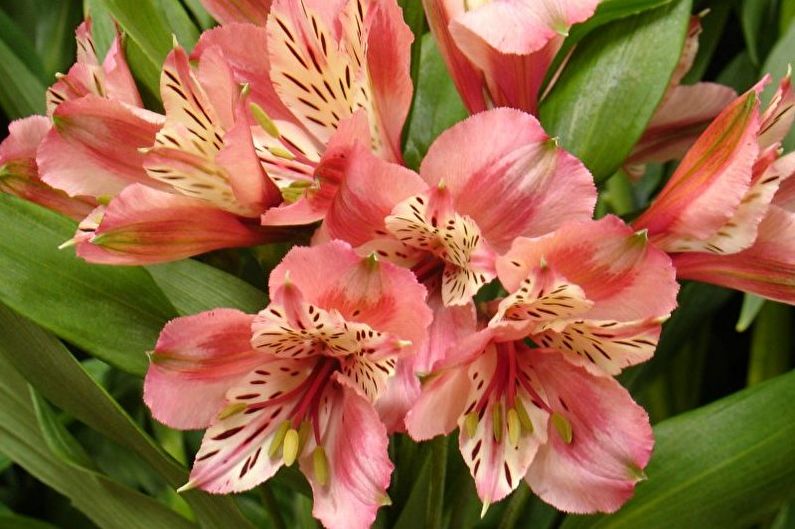
Temperature
Most species of alstroemeria are very thermophilic, although there are hybrids that can withstand frosts down to -20 ° C. The optimal range for normal development will be + 20 ° ... + 22 ° C, and in winter about + 14 ° C. During the setting of buds, as well as flowering, the temperature should be about + 16C.
The roots of the plant are afraid of overheating, so it is better to mulch the soil. In cases where the soil temperature reaches +22, the roots begin to develop intensively to the detriment of flowering, and at +28 the crop freezes in growth, discards foliage and withers.
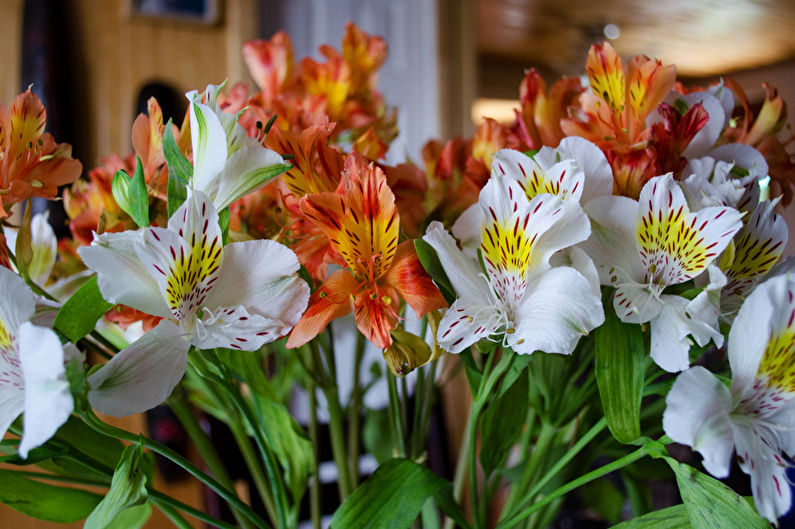

Humidity
Alstroemeria loves moderate moisture, so you need to make sure that the soil does not dry out and is not waterlogged (the roots can rot). To maintain the required level, the soil is loosened and mulched using sawdust, peat or leaf compost. The optimum level of air humidity is 80–85%, therefore, in a particularly dry season, you can spray it in the evening.
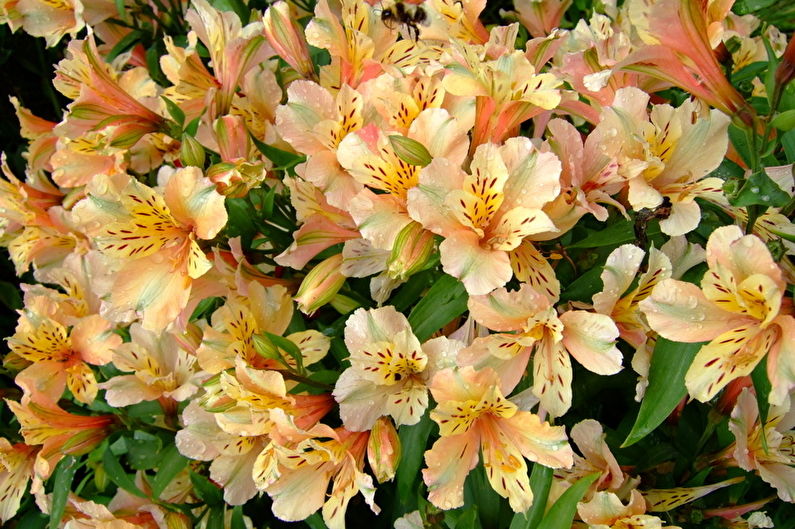
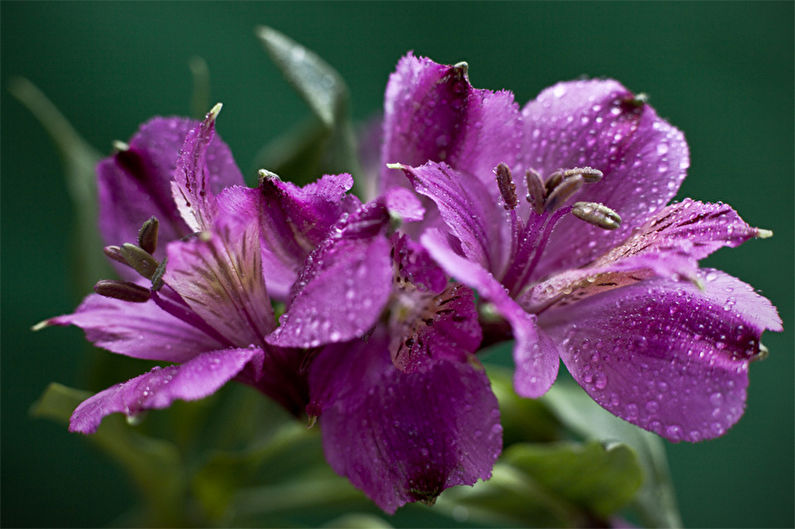
Watering
Alstroemeria loves regular moderate watering, which stops with the onset of autumn cold. Care must be taken to prevent overflow or drought. A sufficient dose will be once a week, and if the weather is hot, you can increase it up to two times. In this case, the soil should be constantly moistened to a depth of 2 cm, otherwise the plant will lose its decorative effect.
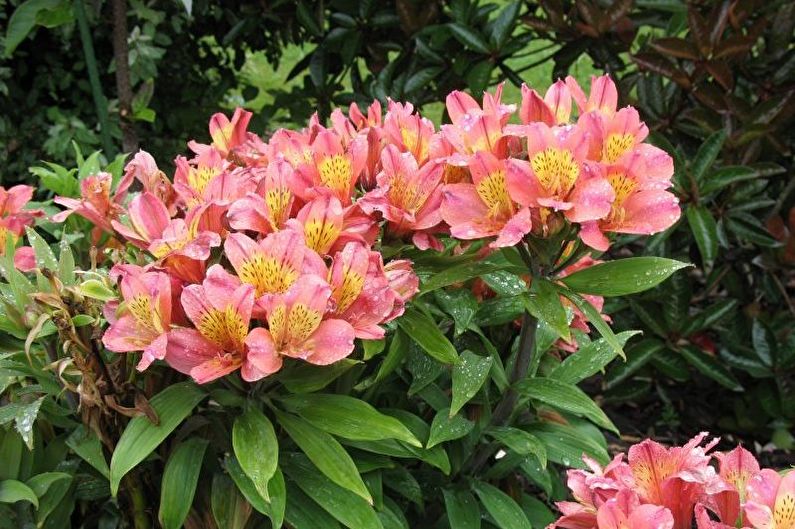

Fertilizers and fertilizing
The first fertilizer in the form of compost should be present in the soil during planting. Next, you need to regularly feed the culture, thereby ensuring lush flowering. The procedure is carried out several times a month. It is recommended to use a complex mineral-type top dressing containing the necessary components of potassium, phosphorus, nitrogen and other substances. It does not hurt to pour wood ash from time to time. As a top dressing, organic additives such as bird droppings or mullein in small concentrations can also be given little by little.
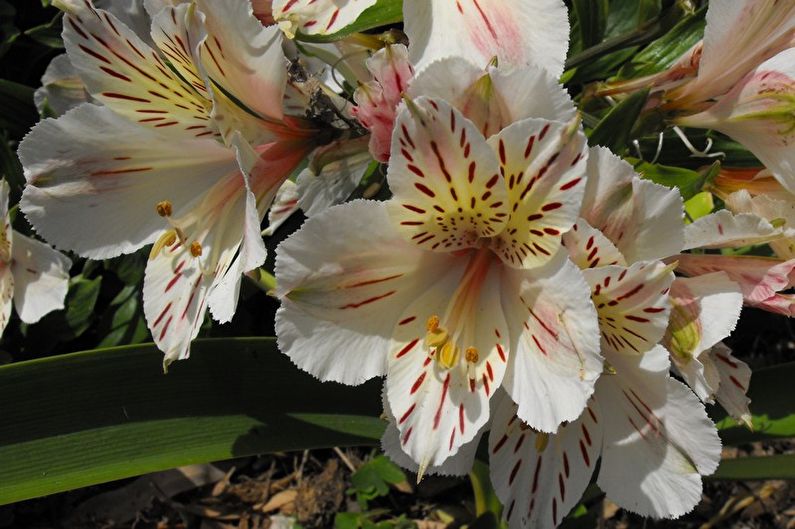
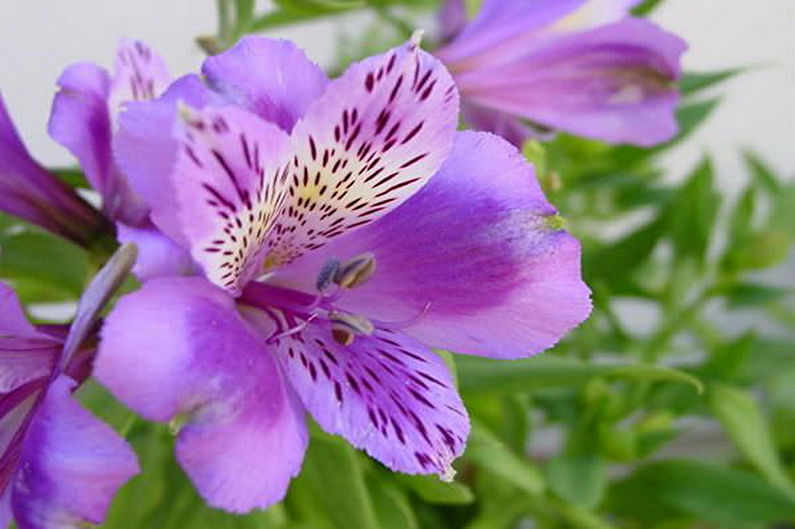
Pests and diseases
The plant may be susceptible to diseases such as late blight, fusarium, root rot. A common cause of their occurrence is improper care, in particular excess moisture in the soil, stagnation of water. This also applies to a disease such as botrytis (gray rot), which can occur with high humidity, inadequate drainage, and also if planting in open ground was carried out during heavy rains. The diseased plant must be treated several times a week with a fungicide solution, spraying it and watering the roots. With this ailment, a flower that is at an early stage of development is rarely able to be saved - most often it is removed from the garden.
The main pests that most often harm the culture are thrips and spider mites. The presence of the former can be determined by the presence on the leaves of silver spots, traces of punctures. Ticks appear as a result of keeping plants in hot conditions. You can fight pests with the help of insecticides (confidor, actara), watering them with soil.

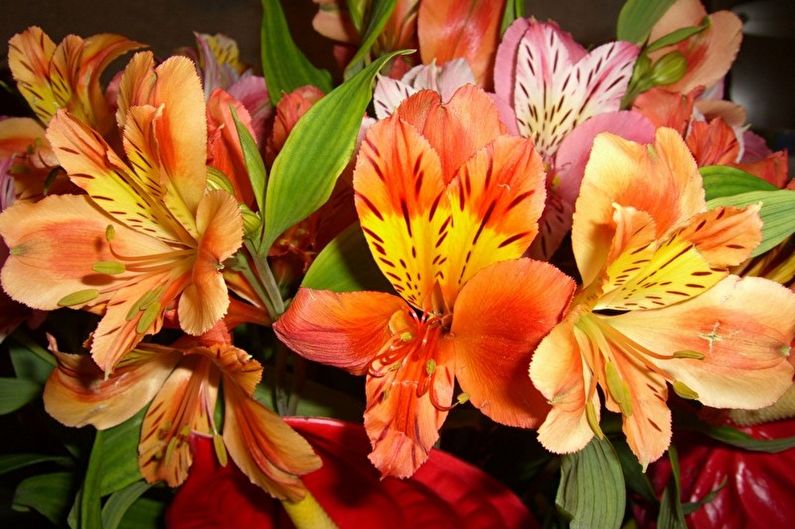
How to transplant alstroemeria
Pot crops are transplanted annually in the spring, adding pine bark, humus, peat to the new soil. At the bottom of the pot you need to equip a good drainage.
Choosing a place to plant in flower beds, you need to make sure that the soil is loose and light - this is the key to excellent flowering. Transplant cultures that have reached, as a rule, three years of age. After planting, regular moderate watering is required. Using mulch will help drown out weeds, create a layer that preserves the looseness of the soil.
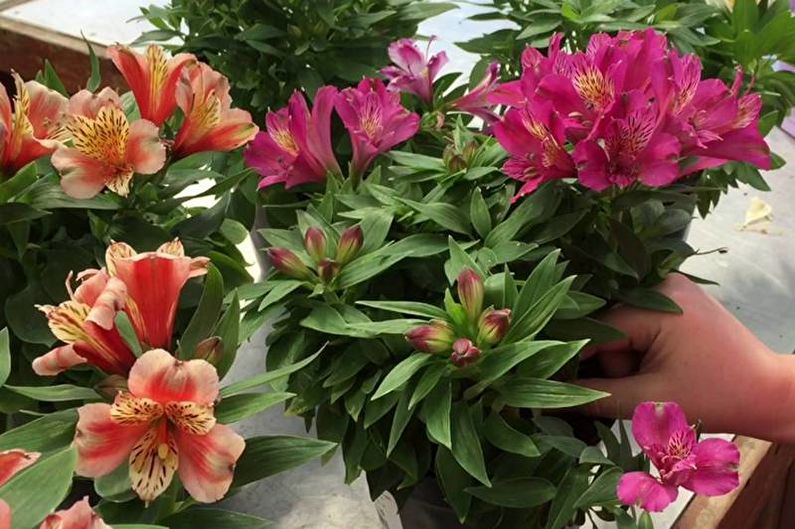
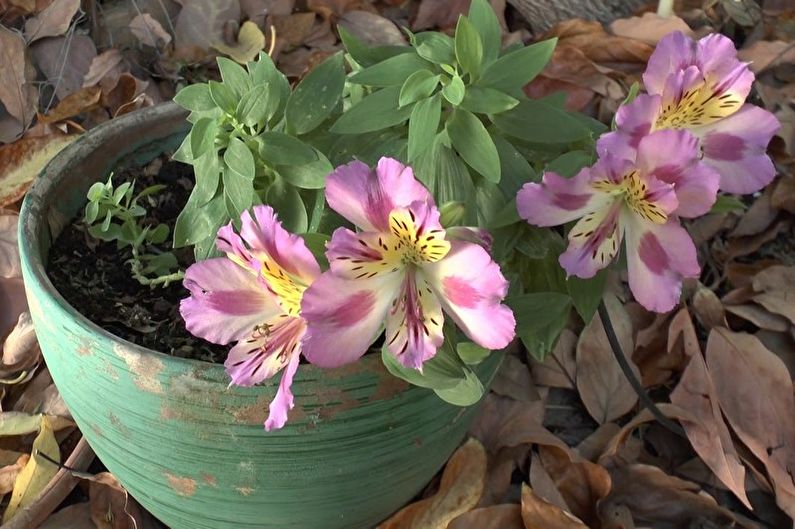
Propagation at home
You can increase the number of your favorite plant species in your area in two ways - by seeds and dividing an adult bush. The seed method allows you to get at the same time quite a lot of new representatives, but a significant drawback is the late flowering of new flowers, which can be observed after a few years.Reproduction using division will allow you to get color the next year.
Alstroemeria seed propagation
At the first stage, it is necessary that alstroemeria seeds pass stratification at a temperature of + 2 ... 5C for a month. This process of creating a winter microclimate causes the seeds to “sleep”, after which, getting into warm soil, they wake up and begin to sprout actively.
Landing takes place in February-March. The prepared material is placed in a container with fertile moist soil. Planting depth - no more than 1 cm. Seeds are slightly pressed and sprinkled with earth. The flowerpot must be covered with film or glass, forming a greenhouse, and kept at a temperature of no higher than +18. The first shoots appear in 15-20 days. Planting seedlings in the ground is carried out on the threshold of summer.
The seeds obtained by sowing will bloom only for 2-3 years.
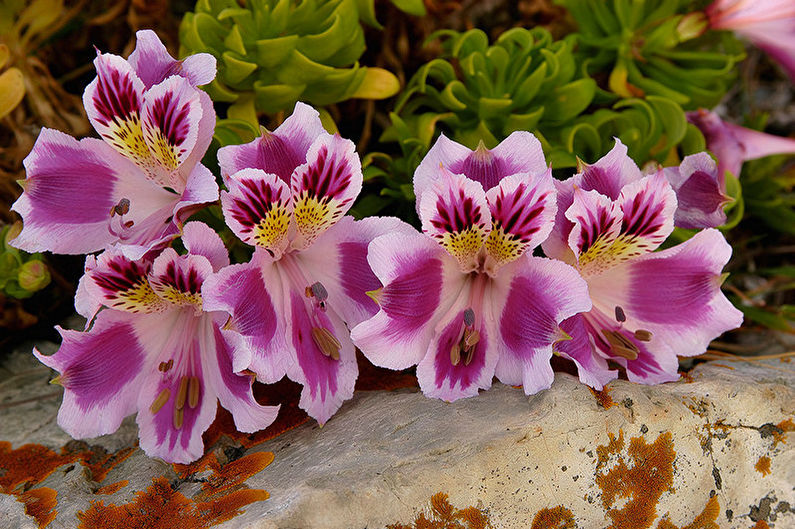
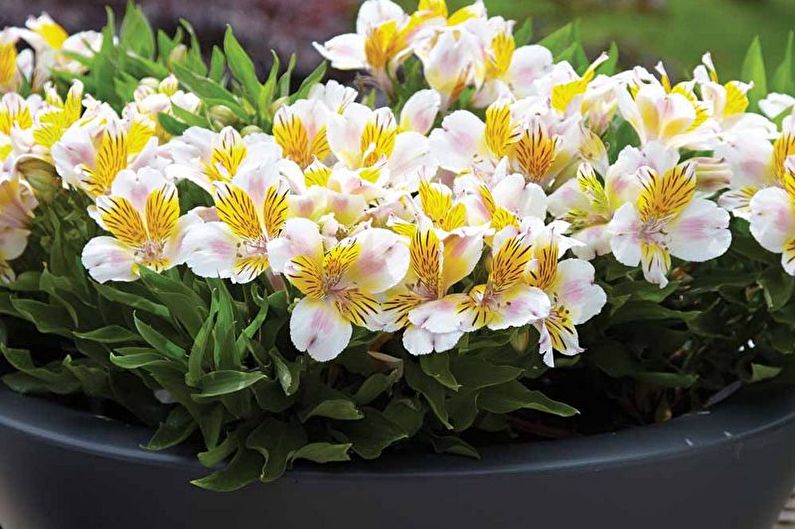
Alstroemeria Breeding
In order to propagate alstroemeria in this way, it is necessary in the spring to dig up the mother bush, which is at least 3 years old, carefully separating large rhizomes. Moreover, the dividend must have at least one kidney. Places of sections of the main bush are sprinkled with charcoal or treated with a disinfectant. New bushes are planted in prepared moist soil to a depth of not more than 20 cm. The first flowering of the bush will take place next year, although some species planted in this way in the fall can bloom in spring.
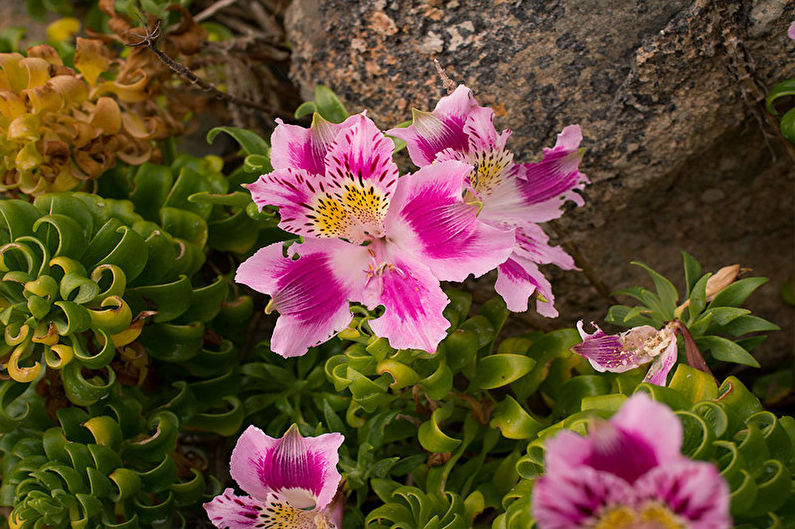

Alstroemeria - photo
With how beautiful exotic alstroemeria blooms in garden plots and at home, we suggest that you familiarize yourself in our photo gallery. Here you can find a variety of species and varieties, their placement in composite flower beds and as beautiful decorations for interiors, loggias and balconies.
